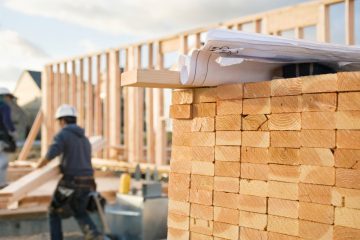More homes to be built with planning changes?
Under controversial new proposals, developers could soon get automatic planning permission to build on old, disused industrial sites within England.
Unveiling the plans as a feature of a much larger push to improve Britain’s productivity, Business Secretary Sajid Javid also said that ministers could be awarded powers to seize unused land. In addition, he suggested that major house products could be fast-tracked and rules on extensions in London property relaxed.
Question marks
Critics have immediately responded to the proposed changes by saying that local developers will have no say over planning. There are also questions are whether the building of new properties will aid productivity as much a ministers suggest will be the case.
Emran Milan, director of the Social Market Foundation said, ‘I think if I was thinking about a productivity plan, housing wouldn’t be the first issue I would leap to.’[1]
What’s more, experts are questioning whether there is actually enough suitable brownfield land that will satisfy the demand of Britain’s housing needs over the next 15 years.
Suitability
The new proposals, which would need to be verified by MP’s, could see the need for planning permission waived on all ‘suitable’ brownfield sites as part of a new zonal system. More changes would see planning permission scrapped for London developers wishing to extend buildings to match the height of their neighbours.
Powers for planning would also be extended to Mayors in London and in Manchester, while compulsory buying powers would see more brownfield land available for development. In addition, councils would receive new sanctions when failing to deal with planning applications in a suitable timeframe, with the Government able to step in to have a say in councils’ local development plans.
Speed
In an interview with the BBC, Mr Javid said that the 141,000 new homes built during the last year was just a fraction of what was needed. On the new proposals, he insisted that, ‘local people will still have control over planning. The point of this is to make sure we build more homes, that local people are still rightly involved in those decisions and we find ways to speed it up.’[2]
‘The green belt can be rightly protected,’ Javid continued. ‘There is plenty of land which is not green belt that we can build on and which is suitable for housing and we need to get on with it. We need to find new ways to encourage it,’ he added.[3]
Mr Javid also said that if the UK’s output per worker was the same as in the United States, Britain’s total economic output would be 30% higher.
Choices
Planning consultancy Nathaniel Lichfield & Partners said that 90% of the UK’s land mass is currently undeveloped and that hard choices need to be made, should the target of 2 million homes be built by the year 2030.
‘In some areas release of Green Belt is required alongside development on brownfield land, said managing director of Nathaniel Lichfield & Partners, James Fennell. [4]



